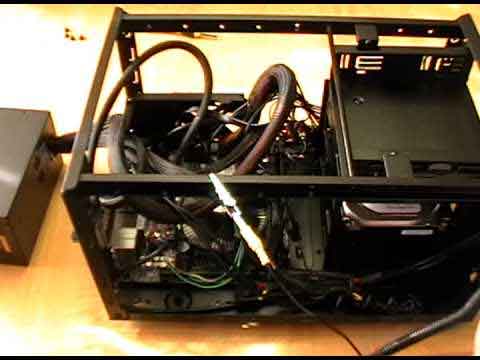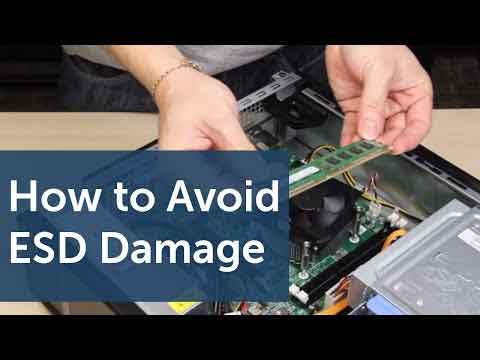- Home
- Troubleshooting
- PC Repair Tools
PC Repair Tools | Your Safety Comes First
Stephen Harrison B.Sc. (Hons), M.Sc., MBCS, CITP
Your PC repair tools must include prevention of ElectroStatic Discharge (ESD). There are many tools available for consideration when working inside computers and Laptops.
In this article, we look at what ESD is, and start with a cautionary tale from my technician days that underline just how damaging ESD can be.
We then look at what your prevention options are with a review of several anti-static tools such as wrist straps and vinyl mats. We also cover anti-static bags for storing hardware components such as RAM modules safely, and anti-static brushes.
We cover the essential tools you need in your kit bag, including some unexpected objects!
Keep up with the latest news and developments
Sign up to the eComputerZ Newsletter
The free A to Z of performing BIOS updates guide that anyone can follow.
✔ A checklist of important actions to perform throughout the update process.
✔ Further supporting information to aid your update plans.
✔ My unique approach for sourcing the latest BIOS versions for any motherboard manufacturer.
Sign up below for instant access to the guide, or by going to the Subscription page for more details.
I never share information with third parties and your details are secure.
I aim to issue newsletters at the start of each month.
Contents
A Technician's Story
The electronics and circuit boards inside your machine are very sensitive to electrostatic discharge (ESD). A small amount can cause subtle issues that re-occur and become difficult to fix. A large amount can cause permanent damage to your computer.
"Electrostatic Discharge is the sudden flow of electricity between two electrically charged objects cause by contact..."
The objects in this instance are your computer, and you!
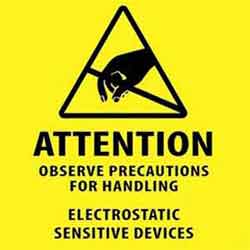 Electrostatic Discharge Warning Notice
Electrostatic Discharge Warning NoticeSource: computerhope.com
In everyday life activities, you naturally build up a static charge in your body. When you touch your faulty computer, which also has an electrical charge, there is a risk of ESD occurring.
Some computer experts challenge the notion of ESD because "in 20 years experience, I've never seen a case of ESD frying computer components!".
Well... I have! Naively working on a hard disk one day without adequate protection. You know that shock you get when you touch a metal door handle? That happened.
When I reconnected the drive and switched the machine back on, it made lots of repetitive clicking noises. The BIOS could not detect it, and the hard drive never worked again.
Return to the Table of Contents
Wrist Straps
An Anti-static wrist strap is the most common solution to ESD. Slip the adjustable elastic or Velcro band around your wrist and attach the bulldog clip on the other end to a bare-metal part (or non-painted part) of your computer.
Most straps come with a small metal plate or conductor that contacts your skin. It is this that prevents ESD.
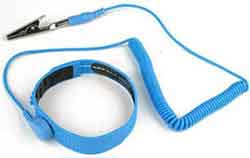 Anti-Static Wrist Strap
Anti-Static Wrist StrapSome beginners get confused about where the wrist strap is to be worn and what to connect the bulldog clip to. You should wear the wrist strap on your dominant hand. This also means you can use both hands safely!
If you cannot find a non-painted part of your chassis, you have a couple of options, including:
- Sand the metallic paint off in a small secluded location of your chassis, ideally where the side of your computer case covers up;
- Attach to another metallic object which is grounded, including a radiator.
Also, ensure you follow the basic safety steps before opening your computer, including:
- Switch off your machine and unplug it from the wall;
- Disconnect your monitor, keyboard, mouse and any other peripherals you have connected to your machine.
You can also wear wrist straps on your ankle if you feel the strap itself 'gets in your way'. However, I would advise against it. There are other options, explained in a moment.
The quick video below shows you how to use an anti-static wrist strap.
PC Repair Tools
Anti-Static Wrist Strap Demonstration Video
Return to the Table of Contents
Vinyl Mats
Anti-static vinyl mats are less popular but just as effective in controlling the discharge of ESD. Simply place your device on top of the mat and use the stud to connect the earthing lead.
These types of mats are available as vinyl or rubber. Vinyl mats are most commonly used on table tops, and can be cut to measure your work surface. They also come in different sizes. Rubber mats are appropriate for when resistance to heat or chemicals is required.
 Anti Static Vinyl Mat
Anti Static Vinyl MatAlternatively, you can stand on the mat instead. If you have a carpet and are prone to generating static with your feet, this is something to consider.
Good quality mats have 'grips' on the underside to stop them from sliding on your table or worktop. I am currently using this mat from Rosewill. The quick video below is an overview of anti-static rubber mats.
PC Repair Tools Anti-Static Mat Overview Video
Return to the Table of Contents
Bags Tape and Brushes
The final section of this article on PC repair tools looks at anti-static bags, tape and brushes.
Over time, you collect a vast array of items such as screws and cables, and internal components such as hard disk drives and sound cards.
Keep your stock of surplus items in anti-static bags. You can buy the bags with zip locks. However, as you acquire internal components they come in anti static bags anyway, which you can keep for future use.
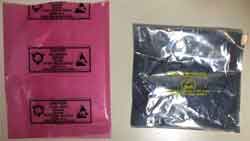 PC Repair Tools
PC Repair ToolsAnti Static Computer Hardware Component Bags
Make sure you seal the top of your bags, especially if they are being re-used. This ensures your components remain protected and smaller items do not spill out. Anti-static tape is ideal for this.
Standard adhesive tape has the potential to generate high levels of ESD. Anti-static tape ensures ESD is kept to a minimum when used with anti-static bags and holding cabling out of the way inside your computer chassis, for example.
I currently use the 3M anti-static utility tape 40. It is useful for sealing boxes of equipment and bundling RAM sticks together.
Anti-static tape is also useful for holding instructions and notes in place when working inside computers.
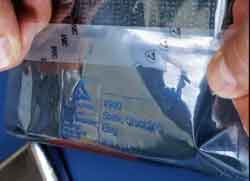 PC Repair Tools
PC Repair ToolsAnti-static Tape
Source: www.3m.com
It is worth noting anti-static tape should be used within 2 years from the date of manufacture. The recommended humidity controlled storage conditions for the 3M tape is.
- 10C/50F to 27C/80F, and <75% RH (Relative Humidity)
The tape also comes in 4 different widths, ranging from 0.25 inches to 1 inch. I tend to use the 1/2 inch width.
Anti-static brushes are very useful for removing dust and debris built up on fans, vents, motherboards and other ESD sensitive components.
The bristles are more rigid than standard brushes and therefore remove dust and debris more easily, without damaging components. This assumes you are grounded on your anti-static mat or wrist strap.
I use the no shock anti-static brush with anti-static compressed air to clean computers. The air blows the easy to remove debris away, and the brush removes the hard-to-reach and stubborn debris.
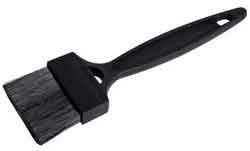 PC Repair Tools
PC Repair ToolsAnti-static Brush
Return to the Table of Contents
PC Repair Tools | Final Thoughts
Electrostatic Discharge is a bigger issue for IT technicians and home computers users than we give it credit for. Why else would there be so many anti-static products on the market?
The chances of shorting your components is low, according to some experts. However, it only takes a moment for it to happen. Make sure you protect yourself and your IT equipment.
Take a look at this article that explains very well how to approach cleaning your device. The detail here also applies when troubleshooting.
The video below is from Dell and shows you how to prevent ESD if you need to work on a computer, and you do not have any anti static items.
PC Repair Tools
How To Avoid ESD Damage Video
- Home
- Troubleshooting
- PC Repair Tools
